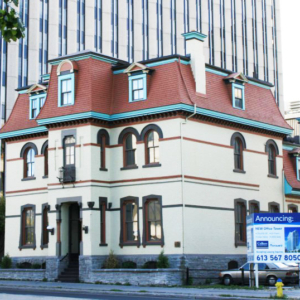Commercial and residential painting are two distinct categories that require different approaches, considerations, and skill sets. Let’s explore the key differences between commercial and residential painting.
- Scale and Scope: Commercial painting projects typically involve larger spaces, such as office buildings, retail stores, warehouses, or hotels, while residential projects focus on individual homes or apartments. Commercial projects often require painting multiple rooms or entire buildings, whereas residential projects are typically limited to a single dwelling.
- Timeframe: Commercial painting projects often have strict deadlines and require efficient completion to minimize disruptions to business operations. Residential painting projects, on the other hand, usually have more flexible timelines, allowing for a more relaxed pace of work.
- Preparation and Surface Conditions: Commercial spaces often have more complex surfaces, such as concrete, metal, or specialized materials, requiring thorough preparation, repairs, and priming. Residential projects typically involve common surfaces like drywall, wood, or plaster, which may still require preparation but are generally less challenging.
- Design and Aesthetics: Commercial painting projects often incorporate branding elements, corporate colors, or specific design schemes to align with the business image and identity. Residential projects are more focused on personal preferences and aesthetics that cater to individual homeowners’ tastes and styles.
- Safety and Regulations: Commercial painting projects must adhere to stricter safety regulations, as they often involve working in public spaces or occupied buildings. Compliance with fire codes, accessibility requirements, and safety measures for workers and occupants is crucial. Residential projects may have fewer regulatory requirements but still need to prioritize safety.
- Team Size and Equipment: Commercial painting projects usually require a larger team of painters equipped with specialized tools and equipment to handle the scale and complexity of the job. Residential projects can often be handled by smaller painting crews using standard tools and equipment.
- Pricing and Contracts: Commercial painting contracts typically involve detailed estimates, competitive bidding processes, and comprehensive agreements outlining the scope of work, payment terms, and timelines. Residential projects may have simpler pricing structures and contracts, often negotiated directly between the homeowner and the painting contractor.
- Disruption and Accessibility: Commercial painting projects need to minimize disruptions to business operations and accommodate the needs of employees, customers, or tenants. Residential projects may have more flexibility in terms of scheduling and accessibility, as they primarily involve working in unoccupied homes.
In summary, commercial and residential painting differ in terms of scale, scope, timeline, preparation requirements, design considerations, safety regulations, team size, pricing, and accessibility. Understanding these differences is crucial for painters and contractors to effectively meet the unique demands and expectations of each type of project. This information was put together with input from Scott’s Painting – search for them by looking up ‘Commercial Painting Contractors Near Me Chagrin‘

